Abstract
Isolated cell preparations of winter wheat (Triticum aestivum L.) were utilized to examine the effect of ice encasement at −1°C and exposure to ethanol on metabolic and biochemical properties of cells. Following icing and ethanol treatments, passive efflux of amino acids increased gradually with duration of exposure to the stress, and closely paralleled the decline in viability of cells. In contrast, uptake of 86Rb declined much more rapidly than viability following exposure to icing or ethanol. Electron spin resonance spectroscopy studies revealed no significant change in molecular ordering within the cell membranes following icing or exposure to ethanol, whereas a small but significant increase in order was detected in the noniced controls. O2 consumption by isolated cells declined only gradually due to icing and ethanol treatments, and remained relatively high even when cell viability was severely reduced. These results indicate that the plasma membrane is a primary site of injury during ice encasement and that damage to the ion transport system is the earliest manifestation of this injury.
Full text
PDF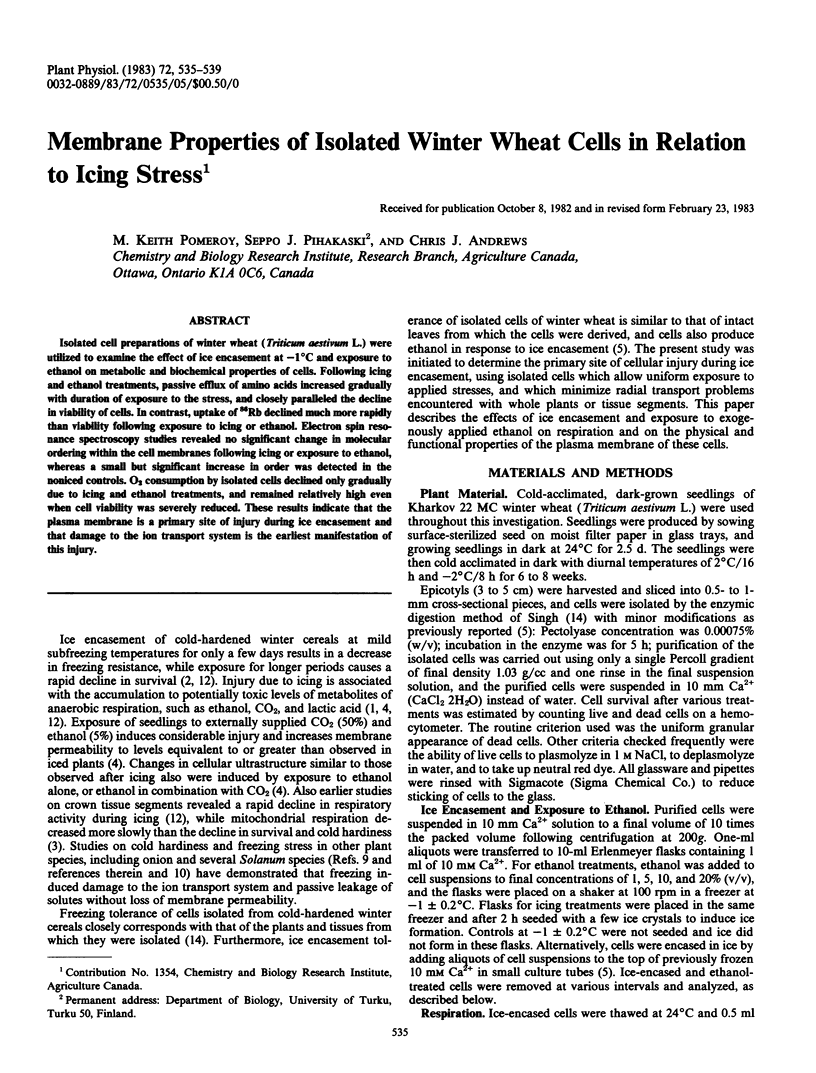
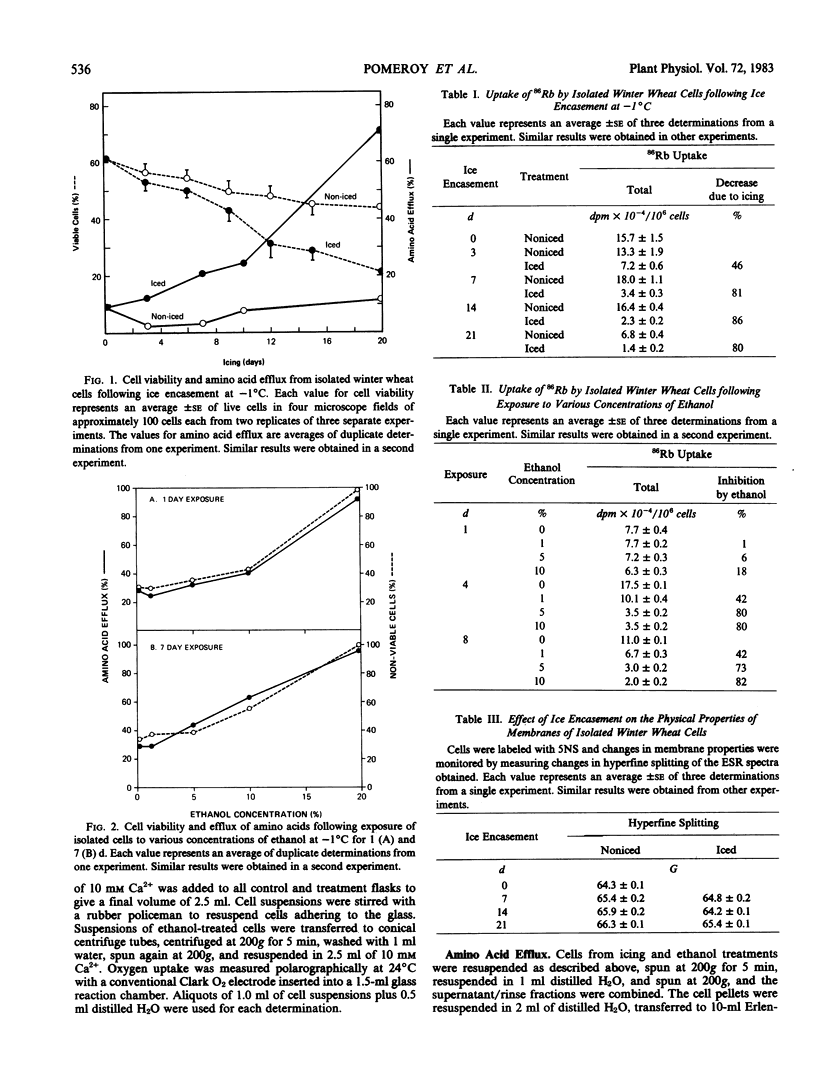
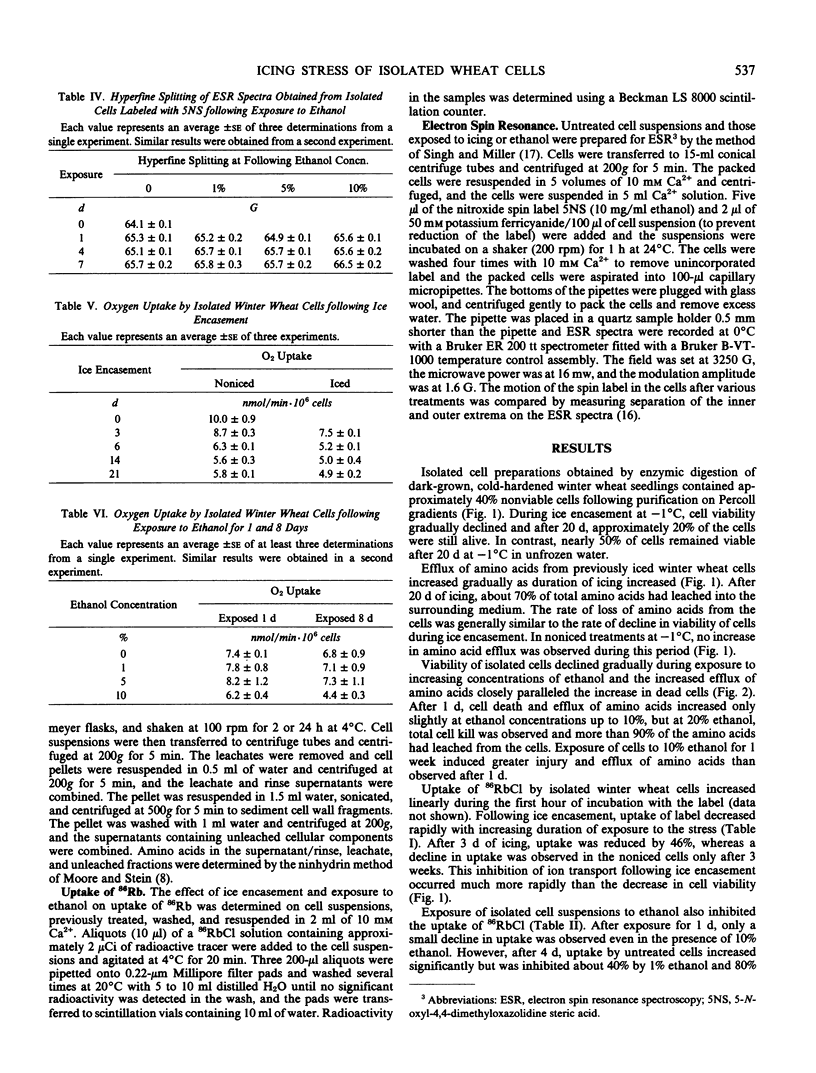
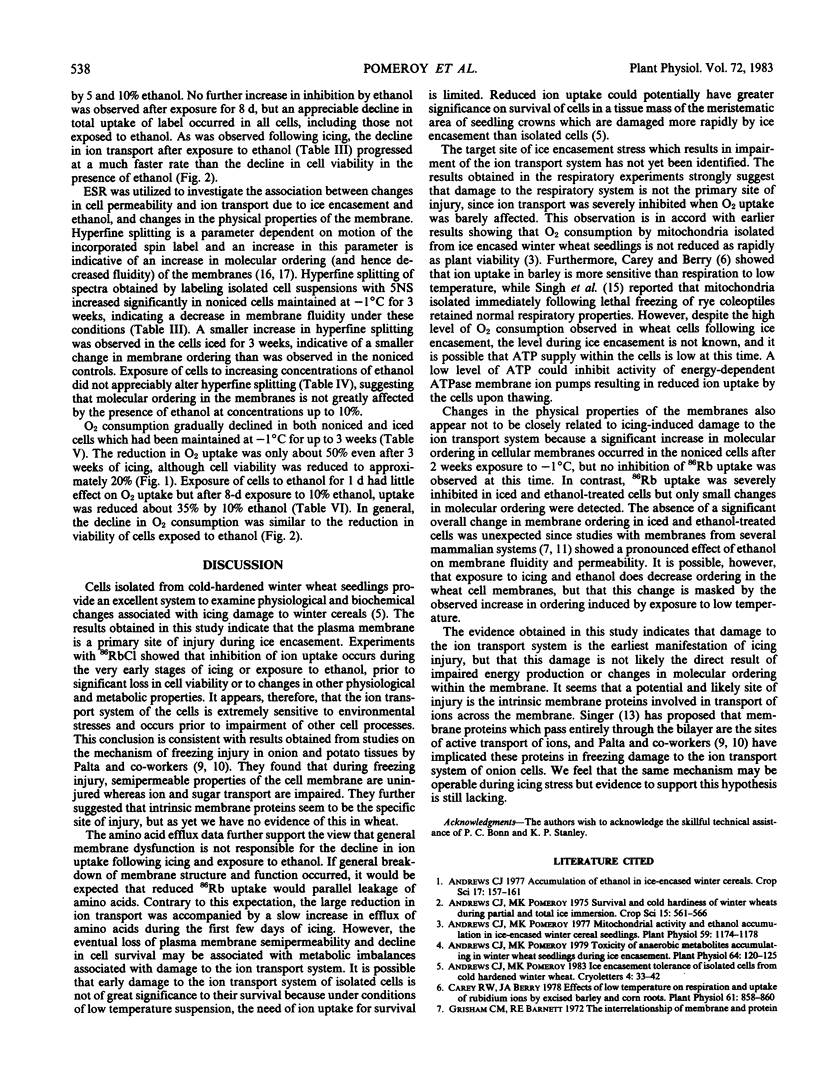
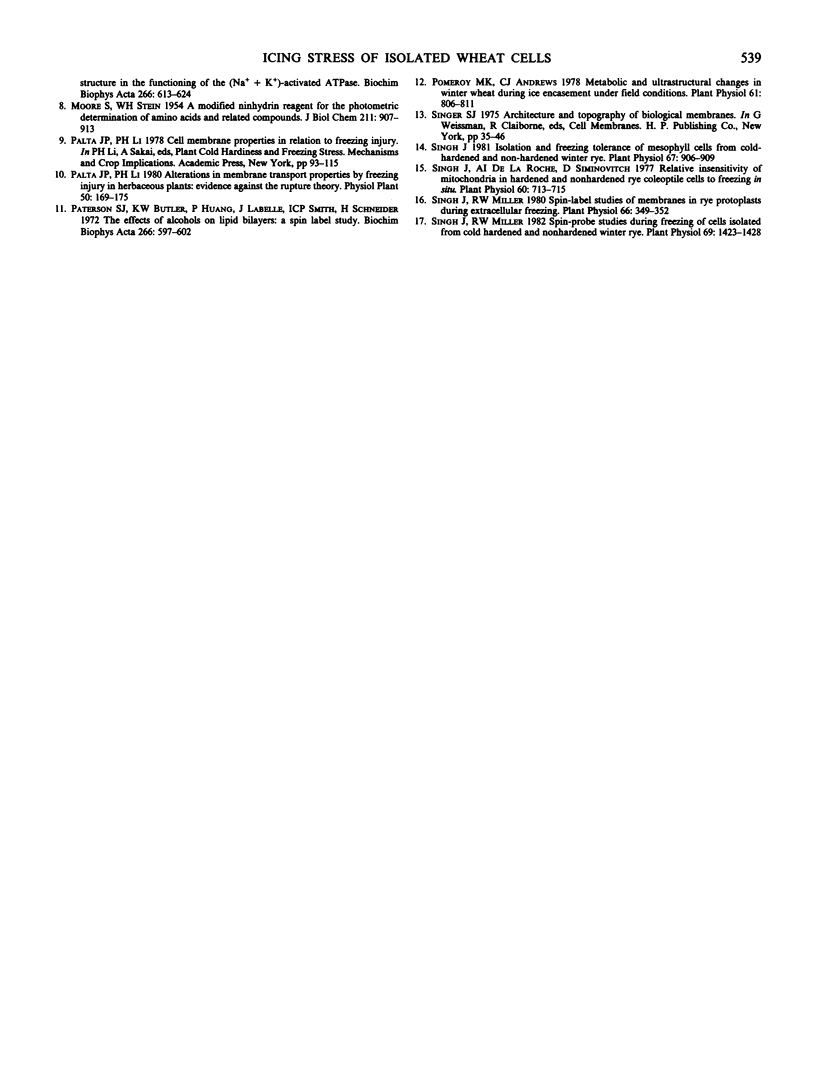
Selected References
These references are in PubMed. This may not be the complete list of references from this article.
- Andrews C. J., Pomeroy M. K. Mitochondrial Activity and Ethanol Accumulation in Ice-encased Winter Cereal Seedlings. Plant Physiol. 1977 Jun;59(6):1174–1177. doi: 10.1104/pp.59.6.1174. [DOI] [PMC free article] [PubMed] [Google Scholar]
- Andrews C. J., Pomeroy M. K. Toxicity of Anaerobic Metabolites Accumulating in Winter Wheat Seedlings during Ice Encasement. Plant Physiol. 1979 Jul;64(1):120–125. doi: 10.1104/pp.64.1.120. [DOI] [PMC free article] [PubMed] [Google Scholar]
- Carey R. W., Berry J. A. Effects of low temperature on respiration and uptake of rubidium ions by excised barley and corn roots. Plant Physiol. 1978 May;61(5):858–860. doi: 10.1104/pp.61.5.858. [DOI] [PMC free article] [PubMed] [Google Scholar]
- MOORE S., STEIN W. H. A modified ninhydrin reagent for the photometric determination of amino acids and related compounds. J Biol Chem. 1954 Dec;211(2):907–913. [PubMed] [Google Scholar]
- Paterson S. J., Butler K. W., Huang P., Labelle J., Smith I. C., Schneider H. The effects of alcohols on lipid bilayers: a spin label study. Biochim Biophys Acta. 1972 Jun 20;266(3):597–602. doi: 10.1016/0006-3002(72)90003-0. [DOI] [PubMed] [Google Scholar]
- Pomeroy M. K., Andrews C. J. Metabolic and Ultrastructural Changes in Winter Wheat during Ice Encasement Under Field Conditions. Plant Physiol. 1978 May;61(5):806–811. doi: 10.1104/pp.61.5.806. [DOI] [PMC free article] [PubMed] [Google Scholar]
- Singh J. Isolation and Freezing Tolerances of Mesophyll Cells from Cold-hardened and Nonhardened Winter Rye. Plant Physiol. 1981 May;67(5):906–909. doi: 10.1104/pp.67.5.906. [DOI] [PMC free article] [PubMed] [Google Scholar]
- Singh J., Miller R. W. Spin-Probe Studies during Freezing of Cells Isolated from Cold-Hardened and Nonhardened Winter Rye : MOLECULAR MECHANISM OF MEMBRANE FREEZING INJURY. Plant Physiol. 1982 Jun;69(6):1423–1428. doi: 10.1104/pp.69.6.1423. [DOI] [PMC free article] [PubMed] [Google Scholar]
- Singh J., Miller R. W. Spin-label Studies of Membranes in Rye Protoplasts during Extracellular Freezing. Plant Physiol. 1980 Aug;66(2):349–352. doi: 10.1104/pp.66.2.349. [DOI] [PMC free article] [PubMed] [Google Scholar]
- Singh J., de la Roche A. I., Siminovitch D. Relative insensitivity of mitochondria in hardened and nonhardened rye coleoptile cells to freezing in situ. Plant Physiol. 1977 Nov;60(5):713–715. doi: 10.1104/pp.60.5.713. [DOI] [PMC free article] [PubMed] [Google Scholar]


